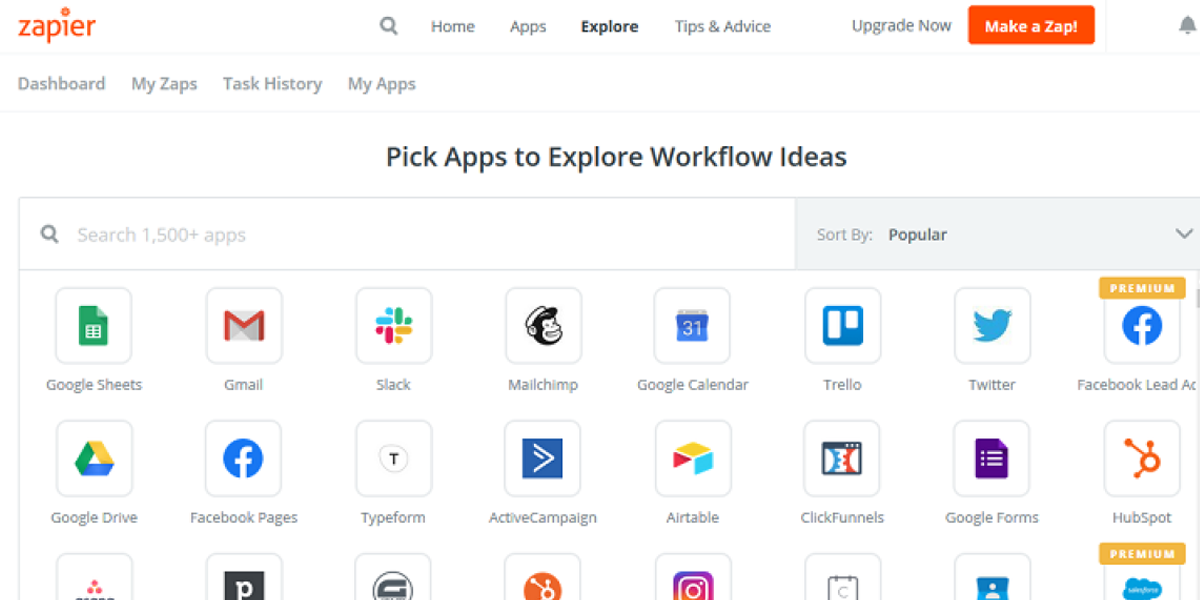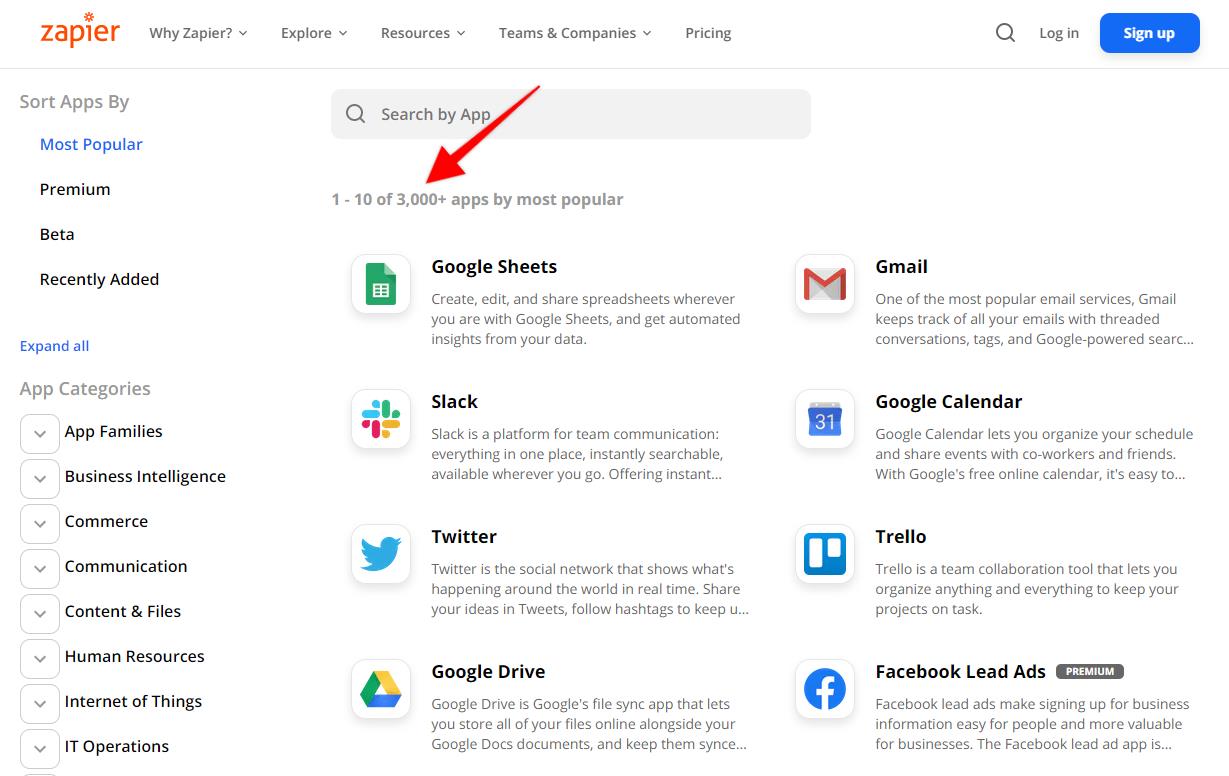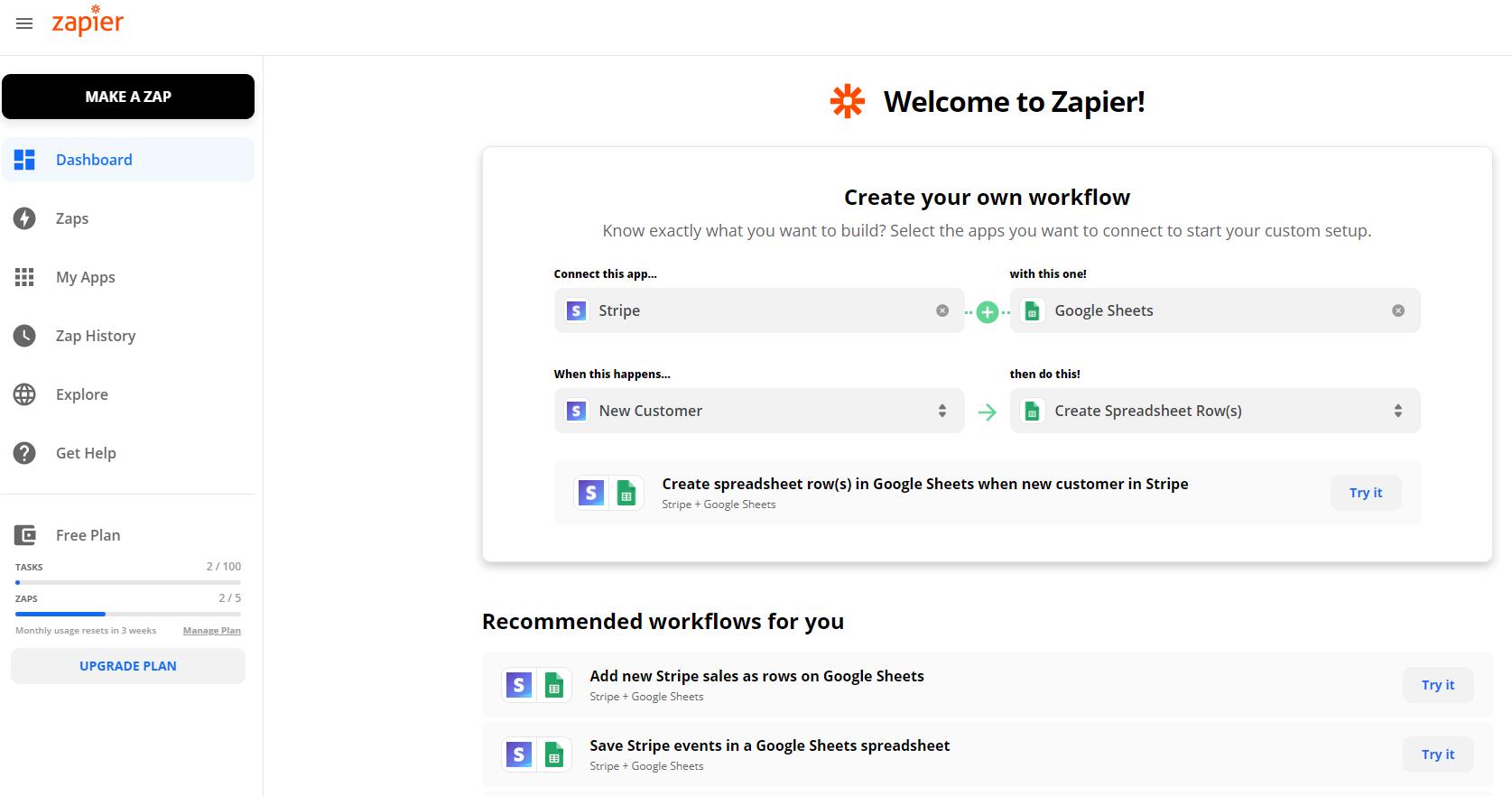How to Supercharge WP Simple Pay with Zapier
By
|
Last updated on
Like many business owners, you probably spend a lot of time engaged in tedious and repetitive tasks. These little tasks don’t take a lot of time on their own, but they add up quickly, especially if you have a lot going on in your business.
Sadly, these tasks don’t just keep you busy. They represent lost productivity, which equates to lost money. There are probably more impactful things you can do for your business if you didn’t have to waste your time on these repetitive tasks.
At WP Simple Pay, we love simplicity, which is why we find automation so appealing. By automating as much as possible, you free yourself to work on creative projects that make serious changes in your business.
Stripe is one of the most versatile payments tools on the market. They’re known for being developer-friendly by providing lots of resources, writing clean code, and supporting their customers. And since WP Simple Pay relies on Stripe, we get to take advantage of Stripe flexibility and ease-of-integration.
With the help of another app called Zapier, you can supercharge WP Simple Pay to automate many of those tedious, boring, and repetitive tasks. In this article, we’re going to explain what Zapier is, how it works, and how to integrate it with WP Simple Pay/Stripe.
What Is Zapier?
First, it helps to have an understanding of what Zapier is, how it works, and how businesses use it for automation.
Zapier is an automation app that serves as a middle-man between other apps (such as Stripe, MailChimp, and all Google products). It allows you to connect services that don’t have native integrations without writing your own custom code. Effectively, this connects a lot of applications together, making it a powerful tool we’ve used ourselves to automate all sorts of tasks over the years.
Zapier has more than 3,000 connected zaps, but the workflow to connect them is extremely straightforward. Zapier will walk you through the steps to build your custom “zaps,” like pasting API keys, confirming your email address, and other basic tasks. You do not need to know how to code to build a zap. You just have to follow the prompts.
With the right combinations of zaps, you can create sophisticated automations that unburden you from tedious work. You won’t have to spend time and energy on basic tasks, like data entry, notifying people by email, or checking apps for updates.
How does Zapier work with WP Simple Pay? Since WP Simple Pay is a simple plugin (as you could guess from its name), we don’t store customer payment information in your WordPress database. We send everything through your website to Stripe. So WP Simple Pay is already hooked up to Stripe.
In order to use Zapier to automate tasks, therefore, you’ll need to create zaps that connect Stripe and other services. Since Stripe already has your customer information collected via WP Simple Pay, this will effectively connect WP Simple Pay to lots of third party apps (just by way of Stripe).
Fortunately, there are lots of native zaps between Stripe and other applications because, well, Stripe is super popular. It’s one of the most-used payments processors in the world, so Zapier has created plenty of integrations you can hook up to with just a few steps.
How to Set up Stripe and Zapier
To get started with Stripe + Zapier integrations, you’ll first need to open a free Zapier account. Inside your account, you’ll see the dashboard where you can make a zap. This is as simple as picking two apps you want to link together. For instance, maybe you want to add new Stripe customers to a Google Sheet.
On the next screen, Zapier will walk you through two components of your zap: the trigger and the action.
The trigger is a signal that starts the automation. When the trigger occurs, Zapier knows to spring into action. In our case, something that happens in Stripe will be the trigger.
You’ll need to make a connection with the trigger app so Stripe can test the trigger. For example, if you want the automation to trigger when a new customer enters your Stripe account, Zapier will need to access your Stripe account and attempt to pull a customer. This means you’ll need to provide login credentials.
The action is the outcome you want to happen based on the trigger. It’s the step or steps Zapier takes in another application when the trigger occurs. Zapier will need to make a connection to this service as well.
Depending on the nature of the services you’re connecting, Zapier may have additional questions. For instance, if either end of the zap is a Google Sheet, Zapier will need to know the correct Drive account, spreadsheet, worksheet, row, etc.
Once you fill out the required information, Zapier will want to run the zap as a test to give you a chance to make sure it’s working properly. This is your opportunity to make sure the action actually occurs as you intend.
Currently, Zapier can connect Stripe to 41 different services. But within each connection are several to dozens of possible accounts. The possibilities for automation are only limited to the functions of each service. Zapier can do whatever each app can do. (There are several pre-built zaps for each service already available to you.)
If you aren’t sure how you might use Zapier to automate your tedious tasks, here are some of our favorite zaps: Stripe + Zapier Integrations That Will Automate Your WP Simple Pay Data.
Transfer Data Anywhere
What if you want to move data around, but Zapier doesn’t have a suitable integration? Fortunately, there is a solution. This is where Zapier’s flexibility shines.
You can connect anything together using two Zapier integrations as long as both services can connect to a Google Sheet. The Google Sheet can temporarily hold data from the first app until it’s pulled from the second app. The flow of data looks like this:
First app > Google Sheet > Second app
For instance, let’s say you wanted to move customer order values from your Stripe account to your analytics tool, but there’s no direct integration between those applications. In this case, you would set up a zap that adds order values to a Google Sheet whenever they come in. Then whenever a new value appears on the Google sheet, a second zap would move it to your analytics tool.
As you can imagine, this method allows you to daisy chain several applications together. The potential for automation is limitless.
Explore Zapier
If you don’t have experience automating your work, you may not see many opportunities to automate. It takes some time to develop the right mindset to automate your tasks. Eventually you’ll start thinking about automation the second or third time you perform the same task.
A great way to get started is to pick one of the apps you use regularly and browse its Zapier page. Look at all of the pre-built zaps to get a feel for Zapier’s potential. With a little creativity, you can save yourself a lot of time, energy, and hassle.




